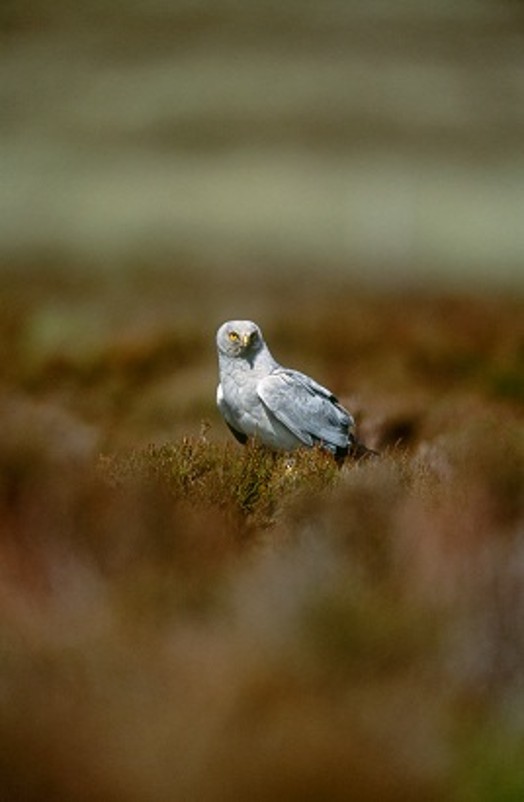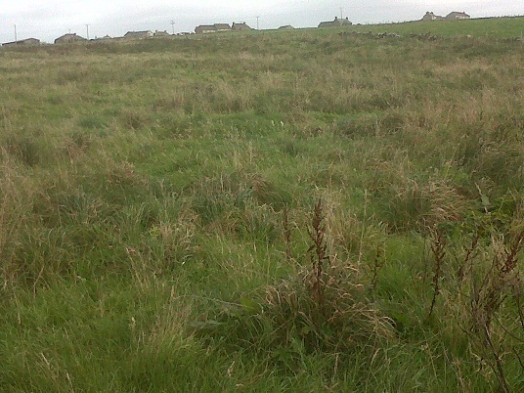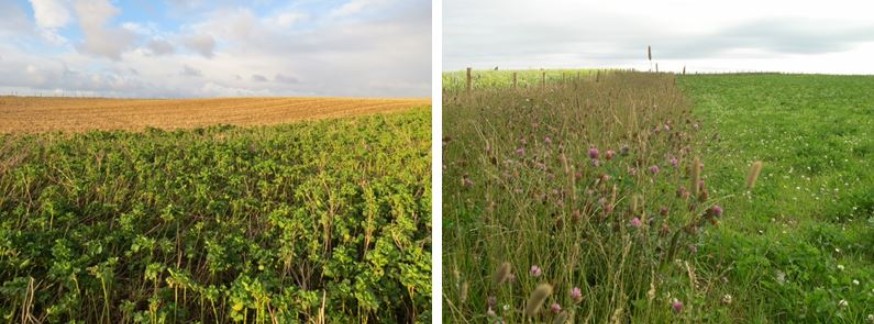Supporting guidance for Hen Harrier Grassland Management
Date published: 14 December, 2015
To see recent changes to this guidance, check the bottom of this page.
Note: In September 2023, references to Scottish Natural Heritage have been updated to NatureScot.
Introduction

The hen harrier is a ground nesting bird of prey associated with open country.
To survive and breed successfully, hen harriers need:
- large expanses of suitable open habitat for hunting
- prey consisting primarily of small birds and mammals
- safe nesting sites, free from disturbance
- protection from persecution
The main aim of this option is to provide a dense cover of grass and other plants to support small birds and mammals that make up the majority of the hen harrier’s diet.
Orkney voles are a key food for hen harriers. Voles prefer a dense cover under which to hide and feed. With appropriate management, a variety of low vegetation types can provide these conditions.
Converting arable fields to grassland and managing existing grasslands more extensively is particularly important in relatively intensively managed landscapes.
Where to locate your hen harrier grassland management

This option is only available in Orkney, which has a large proportion of the UK population of hen harrier.
A map will be required to determine whether or not chosen fields are in the right area. This is because in order to benefit hen harrier, the area managed ideally needs to be within the two-kilometre core foraging area of known hen harrier nest sites. We recommend you contact your local NatureScot office for advice about suitable places to locate this option.
Here are some tips to help you choose locations for creating or managing good vole habitat:
- field corners can be awkward to cultivate and wetter and rougher than other parts of the field. They make ideal vole territory
- wetland margins can provide good vole habitat as voles seem to favour wet places
- rough grassland adjacent to moorland can support more than 100 voles per hectare
- new areas of rough grassland around moorland edges or coastal heath can be created by managing grazing (and is very beneficial to voles)
- rough grass margins in fields and adjacent to tracks, burns or ditches all provide good vole habitat
- link areas of rough grassland with wildlife corridors to help voles colonise the grassland more quickly
How to increase the success of this option
The Hen Harrier Grassland Management option works best where it is deployed alongside other options that improve the hunting habitat quality for hen harriers and contribute to nest safety.
These include:

As well as being essential for birds such as twite on Orkney, the provision of wild bird cover crops is important for foraging hen harrier throughout the winter. They are quickly adopted as part of their hunting territory. These plots also benefit insects such as the great yellow bumble bee.
What else will benefit from this option
It won’t just be hen harriers that benefit from the management in this option. Hen harrier grassland can provide food and shelter for a range of insects and other invertebrates, which in turn provide food for birds. The short-eared owl and other smaller birds of prey will benefit from improved hunting grounds and the habitat will also benefit meadow pipit, skylark and waders such as curlew and snipe.
In addition, hen harrier grassland management on land adjacent to water bodies or watercourses may help to address diffuse pollution issues.
Further information
For further information about hen harrier conservation contact your local NatureScot office.
Recent changes
| Section | Change | Previous text | New text |
|---|---|---|---|
| Where to locate your hen harrier grassland management | Clarification that this option is only available in Orkney. | To benefit hen harriers the area managed needs to be within the two kilometre core foraging area of known hen harrier nest sites. We recommend you contact your local Scottish Natural Heritage office for advice about suitable places to locate this option. |
This option is only available in Orkney, which has a large proportion of the UK population of hen harrier. A map will be required to determine whether or not chosen fields are in the right area. This is because in order to benefit hen harrier, the area managed ideally needs to be within the two-kilometre core foraging area of known hen harrier nest sites. We recommend you contact your local Scottish Natural Heritage office for advice about suitable places to locate this option. |
| How to increase the success of this option | Amendment to introductory sentence. | The Hen Harrier Grassland Management option works best where it is deployed alongside other options that improve the hunting opportunities for hen harriers and contribute to the safety of their nests. | The Hen Harrier Grassland Management option works best where it is deployed alongside other options that improve the hunting habitat quality for hen harriers and contribute to nest safety. |
| Pictures and information on wild bird cover. | - | As well as being essential for birds such as twite on Orkney, the provision of wild bird cover crops is important for foraging hen harrier throughout the winter. They are quickly adopted as part of their hunting territory. These plots also benefit insects such as the great yellow bumble bee. | |
| What else will benefit from this option | Hen harrier grassland can provide food and shelter for a range of insects and other invertebrates, which in turn provide food for birds. Meadow pipits and skylarks nest here, as do waders such as curlew and snipe. As well as hen harriers, short-eared owls also like to hunt for voles over rough grassland. |
It won’t just be hen harriers that benefit from the management in this option. Hen harrier grassland can provide food and shelter for a range of insects and other invertebrates, which in turn provide food for birds. The short-eared owl and other smaller birds of prey will benefit from improved hunting grounds and the habitat will also benefit meadow pipit, skylark and waders such as curlew and snipe. In addition, hen harrier grassland management on land adjacent to water bodies or watercourses may help to address diffuse pollution issues. |
Previous versions
Download guidance
Click 'Download this page' to create a printable version of this guidance you can save or print out.
